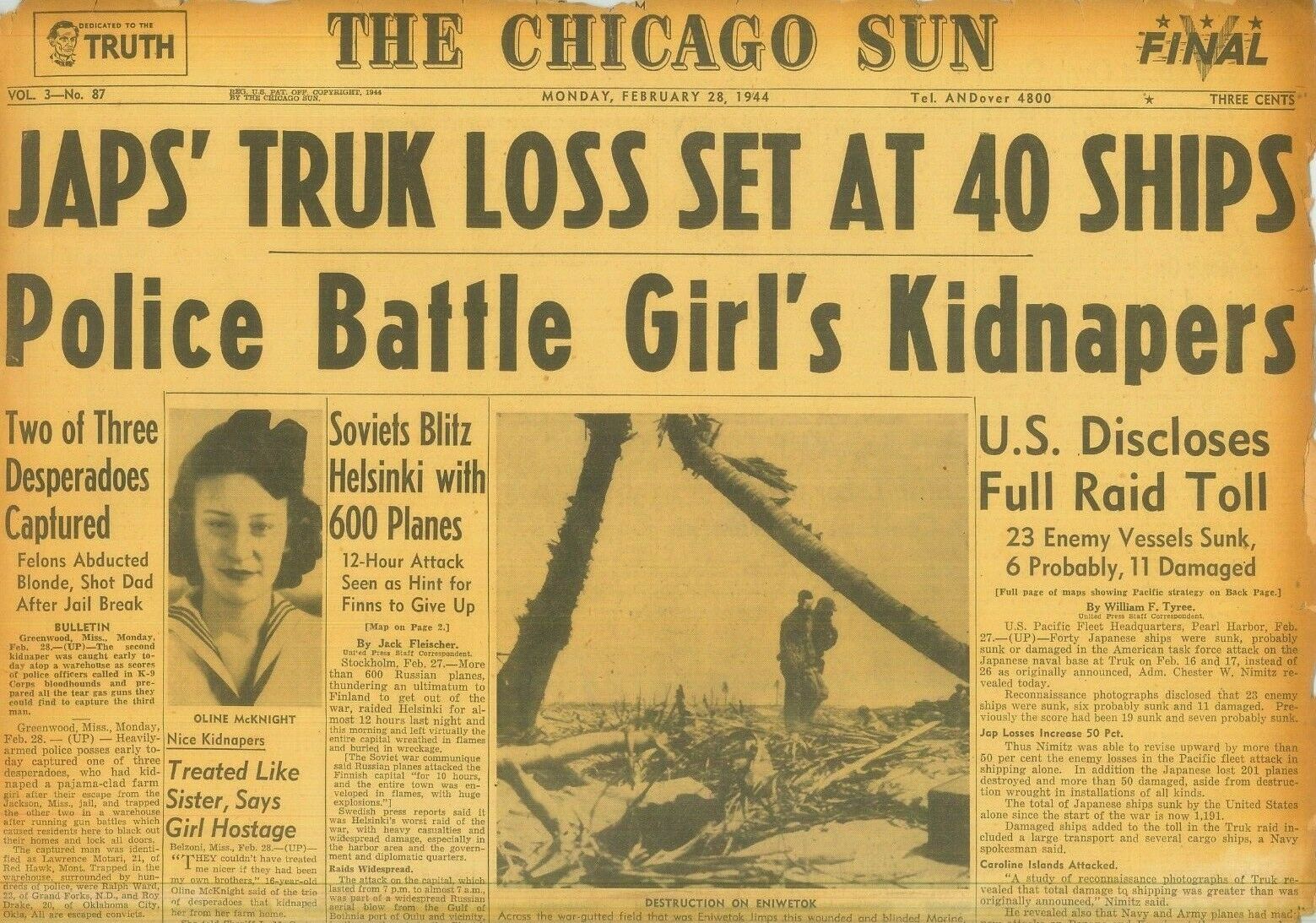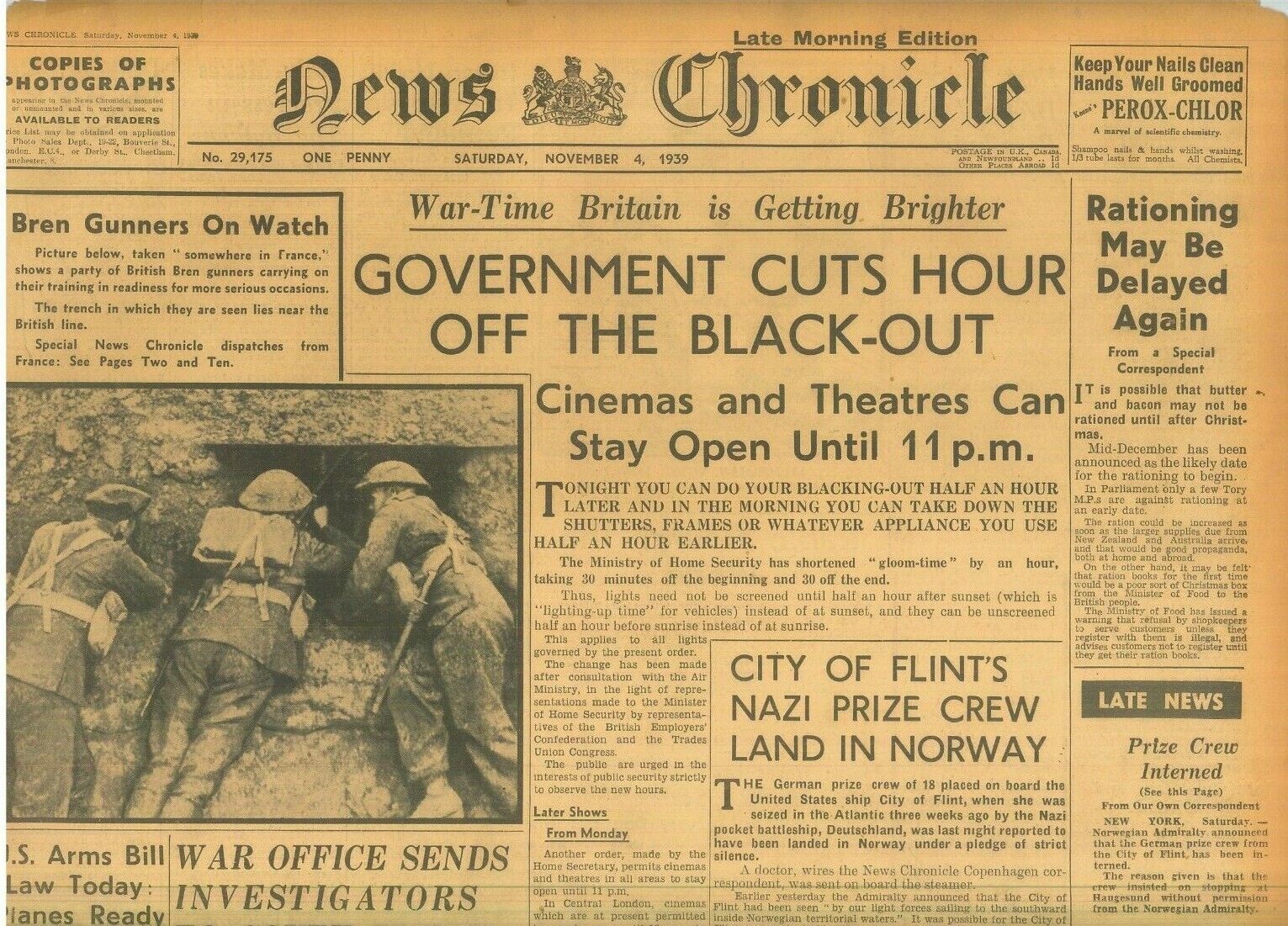-40%
US Attack Japanese Naval Base Truk Lagoon 40 Enemy Ships Sunk February 28 1944
$ 36.43
- Description
- Size Guide
Description
Chicago Sun dated February 28th 1944US Attack Japanese Naval Base
(20 Pages)
Sep 3, 1943 - Sep 1944
With North Africa secured and Sicily—the stepping stone to Italy—conquered, the Allied forces launched their invasion of Italy on 3 September 1943. It began with British forces skipping across the Strait of Messina to Calabria. A few days later, more British and American forces landed several hundred miles to the north at Salerno. Their plan was simple: the northern forces would throw a net across the Italian peninsula while the British army chased the Germans into it from the south.
Allied commanders expected a relatively easy campaign. A secret agreement with the new Italian government led by Pietro Badoglio, signed 3 September, would neutralize the Italian forces, leaving only German divisions offering resistance. But things proved more difficult than anticipated. The Germans immediately seized Italian military installations upon hearing of their capitulation, imprisoned their hapless former allies, and fired on their clueless ships. German defenses were, consequently, more secure than the Allies expected when they made their landings. And by the time the Allies threw their net, the German had moved beyond it to the north and had established a defensive line, known as the Gustav Line, about 75 miles north of Naples.
Several factors now worked to strengthen the Germans’ hands. The rugged terrain of the peninsula slowed the invading armies; and re-enforcements from Germany arrived just as the Allies began directing more of their new recruits to Britain in preparation for a 1944 cross-channel invasion.
In January 1944, the Allies tried to break the deadlock by landing at Anzio, 50 miles above the Gustav line and 30 miles below Rome. It should have been a great success. The landing was preceded by a diversionary strike against the Gustav Line at Cassino. In response, German troops stationed at Rome were dispatched to beef up the line leaving Anzio virtually undefended. The Allies hoped that once the landing was successfully made, the Germans would have to send these and several other divisions from the Gustav line back north, thus softening the line for a major Allied push. But the American commanders at Anzio, Major Generals Mark Clark and John Lucas, proceeded too slowly and thus failed to take advantage of the momentary weakness in the German lines. As a result, German troops were quickly redeployed and the opportunity for a quick strike against them was lost.
In February, the Allies made several attempts to break through at Cassino. In the first phase of this newest campaign, Allied bombers destroyed the ancient monastery on top of Monte Cassino in the mistaken belief that it served as a German observation tower. The Allies were wrong and their misguided attack alienated Catholics around the world.
Allied bombers soon found more appropriate targets among German units deployed lower on the mountain. But through February and March, the frequent air assaults failed to dislodge these defenses or enable a push through the German lines.
Finally, deception succeeded where air power had not. Allied forced staged an elaborate faux attack north of Rome compelling the German commander Albert Kesslelring to divert forces from his lines at Cassino. At the same time, Allies tightened their grip on German supply lines preventing Kesslering from reinforcing his defenses at Cassino. By May, the Allies enjoyed a 3:1 advantage; and they smashed through the depleted German lines and rushed north liberating Rome and all the territory in between. The Germans were forced back, but not out of Italy. They established a new defensive line —the Gothic Line—200 north miles of Rome.
In September 1944, the invasion of Italy came to an anti-climactic end. Allied commanders on the ground believed they were poised to crush the German line that stretched from Pisa to Florence. But Allied commanders in Washington and London decided that the cross-channel invasion of France, launched the previous June, should be supported by an invasion of Southern France. Therefore, divisions were transferred from Italy to this new theater. The complete eradication of German forces from Italy would have to wait.
Wonderful birthday gift with topical news from home and abroad including numerous photographs, stories, fashion and adverts.
We have a collection of these stunning newspapers and other titles from the 1920's 1930's 1940's 1950's 1960's 1970's 1980's for January, February, March, April, May, June, July August, September, October, November and December. Covering many dates in any given month.
Please don't hesitate to contact us through eBay messaging with any specific dates or inquiries.
Professional high quality packing.











